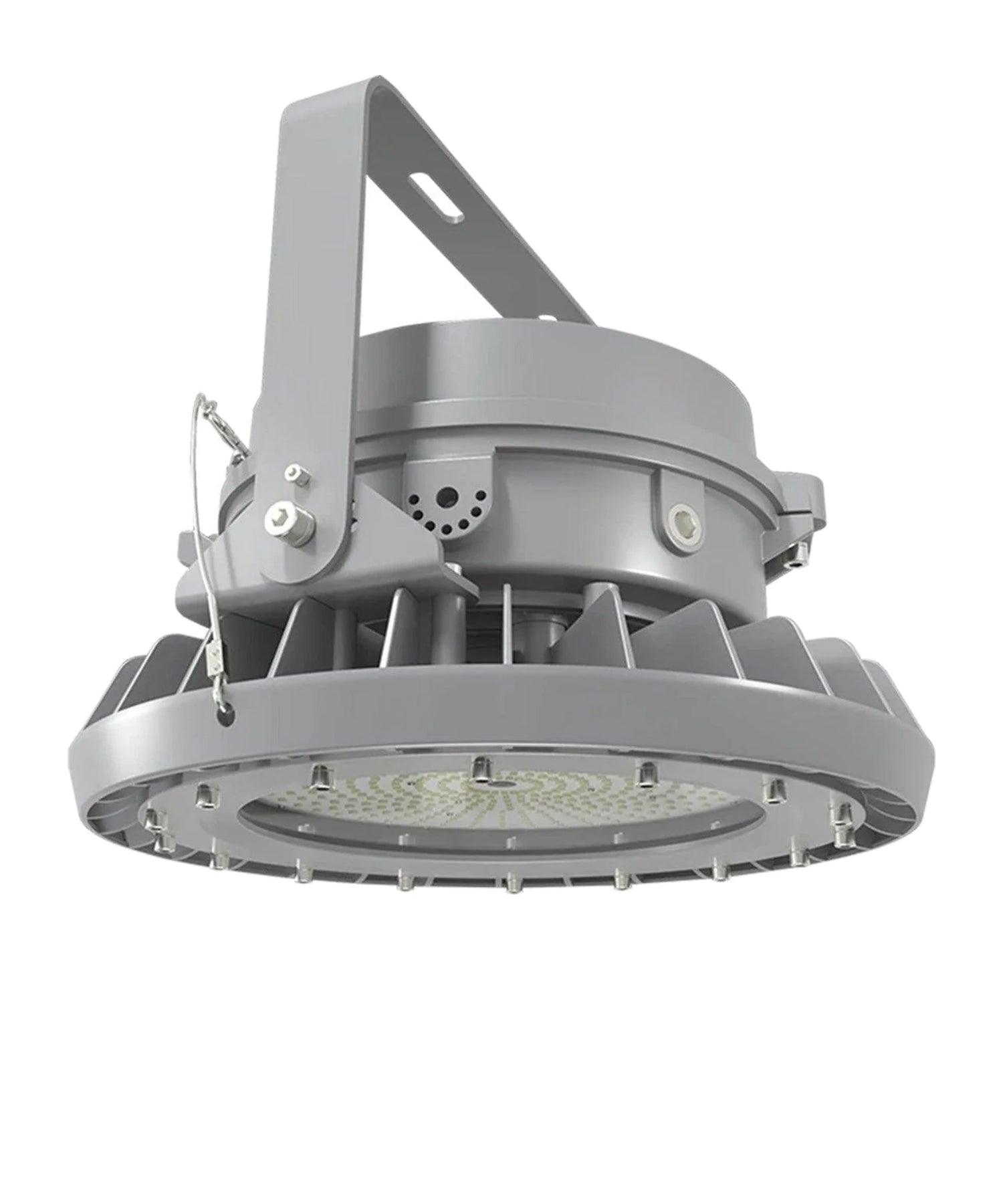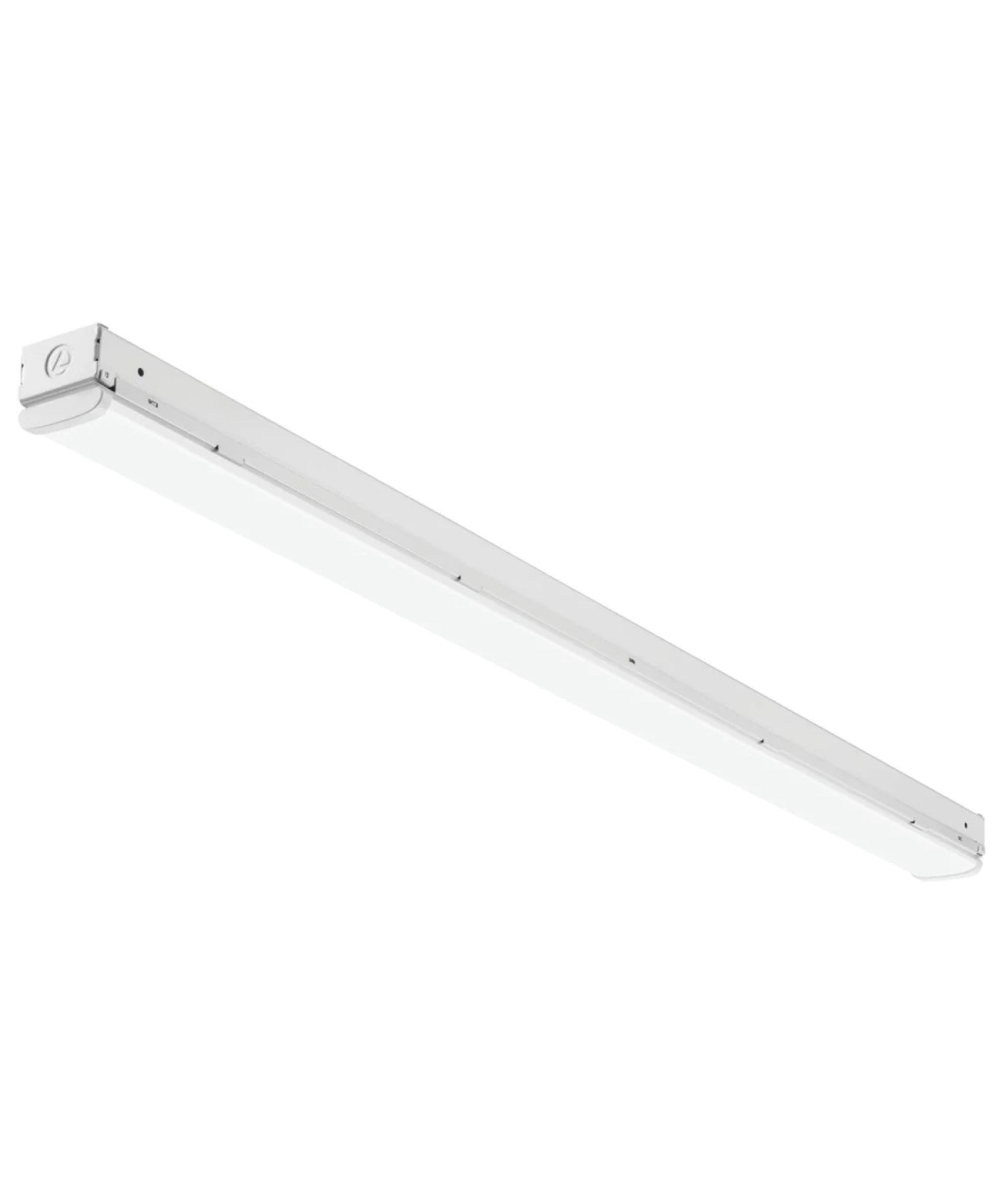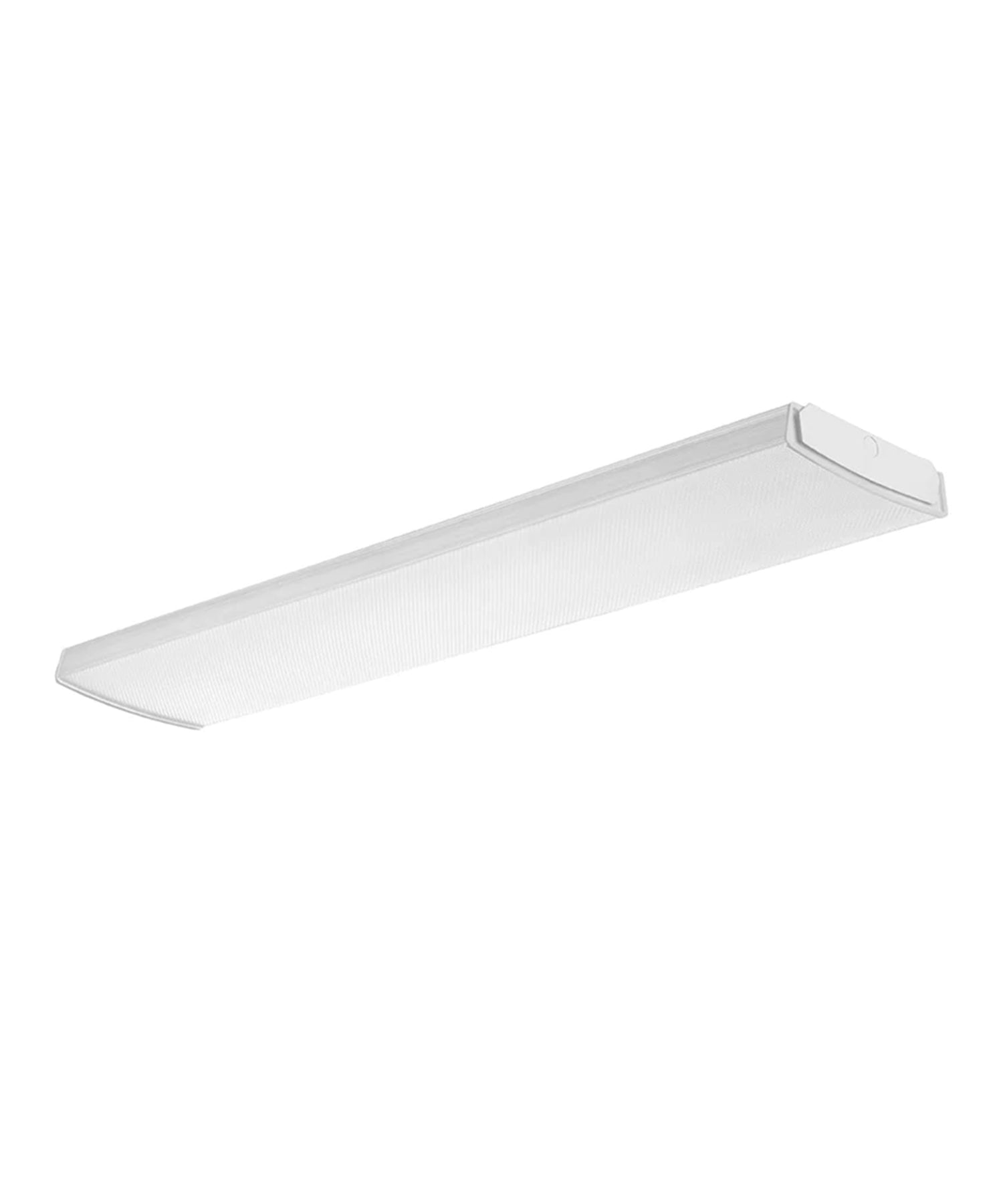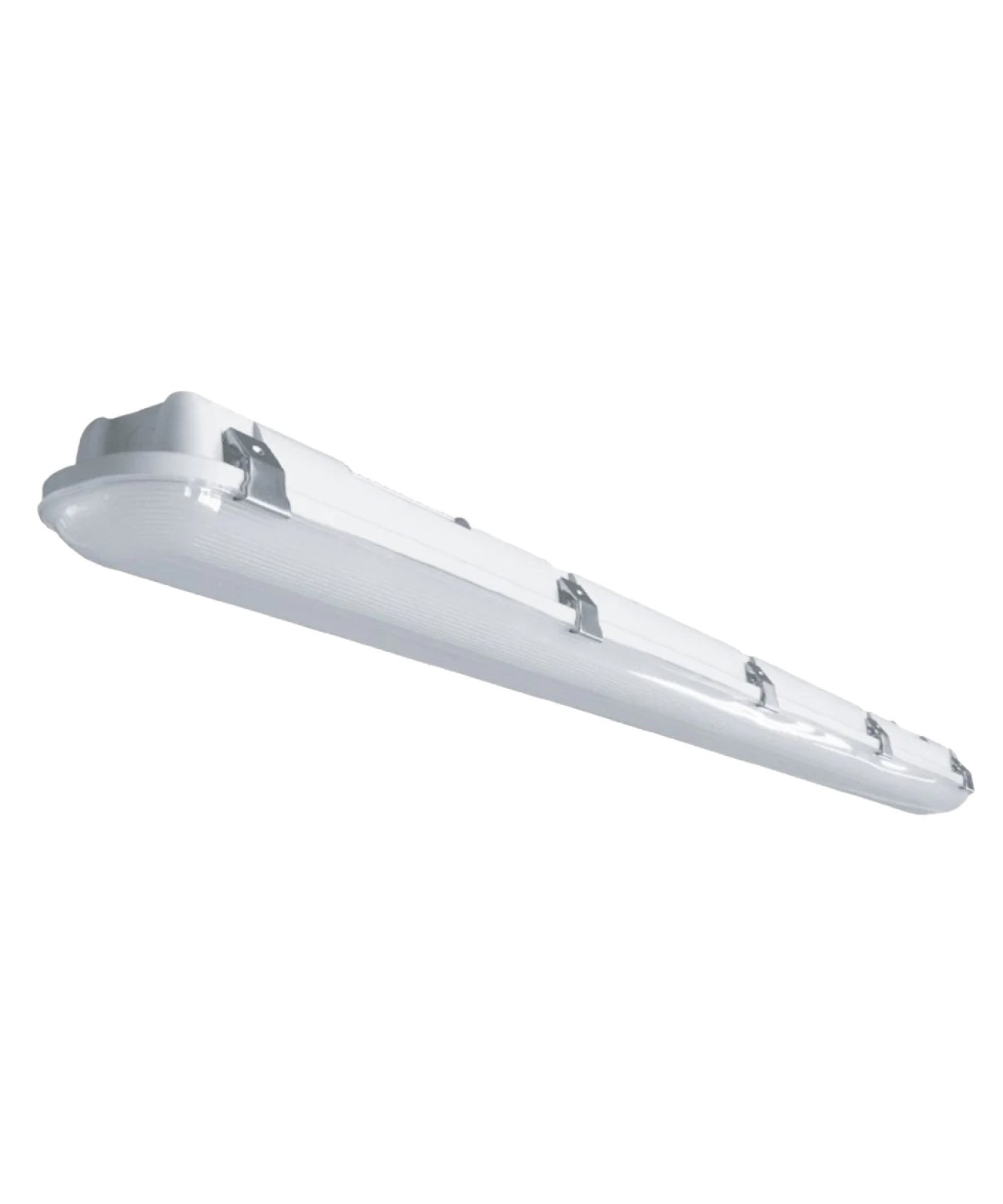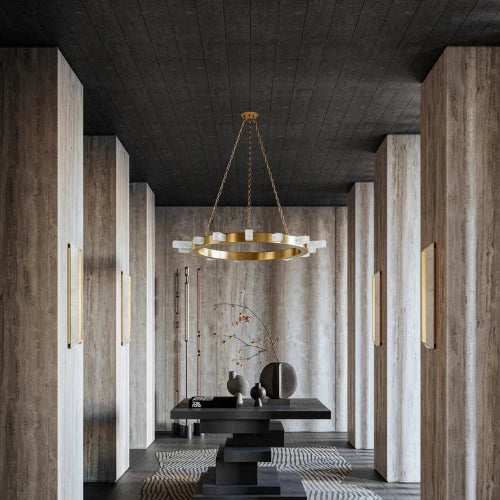LED high bay lights are powerful and efficient lighting fixtures designed to illuminate large indoor spaces with high ceilings, typically 20 to 40 feet or more. These robust fixtures are the ideal lighting solution for a variety of commercial, warehouse, and industrial lighting applications, providing bright, uniform light from a significant height. Whether you're outfitting a new manufacturing facility or upgrading your warehouse lighting, our selection of high bay LED lights offers superior performance and significant energy savings.
Types of LED High Bay Fixtures
To meet the diverse needs of our commercial and industrial clients, we offer a range of LED high bay fixtures. Each type is designed for specific environments and applications, ensuring optimal lighting for your space.
- UFO High Bays: Recognizable by their compact, circular design, UFO high bay lights are perfect for open-area applications. Their shape allows for a wide and even distribution of light, minimizing shadows and dark spots. These fixtures are easy to install and are a popular choice for warehouses, gymnasiums, and large retail stores.
- Linear High Bays: LED linear high bay fixtures are the modern successor to traditional fluorescent tube lighting. Their long, rectangular shape makes them ideal for illuminating aisles, corridors, and long workspaces. These lights provide a broad and consistent swathe of light, enhancing visibility and safety in stockrooms, manufacturing plants, and workshops.
- Vapor Tight High Bays: For environments where moisture, dust, and other particulates are a concern, vapor tight high bay lights are the ultimate solution. These sealed and gasketed fixtures protect the internal components from the elements, making them suitable for both indoor and outdoor use. They are commonly found in cold storage facilities, food processing plants, car washes, and parking garages.
Applications of LED High Bay Lights
The versatility and powerful illumination of high bay LED lights make them the preferred choice for a wide array of large-scale environments. Their robust construction and efficient output are essential for maintaining safety and productivity. Common applications include:
- Warehouse and Distribution Centers: Providing clear, bright light for aisles, loading docks, and storage areas to ensure operational safety and efficiency.
- Manufacturing Facilities: Illuminating production lines and assembly areas with consistent, high-quality light that reduces eye strain.
- Gymnasiums and Sports Arenas: Offering uniform, glare-free lighting for sporting events and recreational activities.
- Industrial Workshops: Ensuring detailed tasks can be performed safely with bright, focused light.
- Large Retail and Big-Box Stores: Creating a well-lit, welcoming environment for customers in open-concept retail spaces.
- Aircraft Hangars and Exhibition Halls: Lighting vast, open areas with high ceilings effectively and economically.
Alternative High Bay Lighting Solutions
In addition to our primary high bay fixtures, we also provide a selection of other lighting options to suit various needs and budgets.
- Shop Lights: While similar in appearance to linear high bays, LED shop lights are typically less powerful and designed for spaces with lower ceiling heights, such as garages and small workshops.
- High Bay Retrofit Bulbs: A cost-effective solution for upgrading existing traditional high bay fixtures to energy-efficient LED technology without replacing the entire fixture.
- LED Tube Ready Fixtures: These fixtures are designed to accommodate LED tubes, offering a flexible and easily maintainable lighting solution for various applications.
Features and Benefits of LED High Bay Lights
Upgrading to LED high bay lights from traditional metal halide or fluorescent fixtures offers a multitude of advantages for your commercial, warehouse, or industrial space.
- Superior Energy Efficiency: LED high bays consume significantly less power, leading to substantial energy savings of up to 80% compared to the high consumption of traditional lights.
- Extended Lifespan: LEDs feature a long operational life, often exceeding 50,000 hours. This drastically reduces the need for costly and frequent bulb replacements common with traditional fixtures.
- Enhanced Light Quality: Experience superior, uniform illumination with excellent color rendering. Unlike traditional lighting, LEDs provide bright, clear light without the flickering or color degradation issues.
- Exceptional Durability: Built with solid-state construction, LED fixtures are highly resistant to shock and vibration, making them far more durable than the fragile components of traditional lights in industrial settings.
- Instant-On Performance: LED high bays illuminate to full brightness instantly. They eliminate the warm-up period required by metal halide lights and the cool-down period before restarting.
- Low Heat Emission: By producing very little heat, LEDs reduce the strain on your HVAC system, which can lead to additional savings on cooling costs, a benefit not offered by heat-generating traditional lights.
- Environmentally Friendly: LED lights contain no hazardous materials like the mercury found in fluorescent and metal halide bulbs, making them a safer and more eco-friendly choice.
Why Choose Bees Lighting for Your High Bay Needs?
Choosing the right lighting for your commercial, warehouse, or industrial space is a critical decision that impacts safety, productivity, and your bottom line. At Bees Lighting, we are committed to providing our customers with top-quality LED high bay lights that deliver exceptional performance and value. Our extensive selection of led high bays and led high bay fixtures ensures that you will find the perfect lighting solution for your specific needs.
We understand that navigating the world of commercial lighting can be complex, which is why our team of friendly and knowledgeable experts is here to assist you every step of the way. We offer free lighting layout designs to help you visualize the optimal placement of your fixtures for maximum efficiency and coverage.
When you choose Bees Lighting, you benefit from:
- A Wide Selection: We carry a comprehensive range of commercial lighting solutions.
- Competitive Pricing: Our 100% price match guarantee ensures you get the best value.
- Excellent Customer Service: Our support team is here to help with any questions you may have.
- Risk-Free Shopping: We offer free shipping on orders over $99 and a 60-day return policy.
Illuminate your space with confidence. Contact us today at 855-303-0665 to learn more about our LED high bay lights and let us help you find the perfect lighting solution for your business.
Frequently Asked Questions
What is the recommended lumen range for LED high bay lights based on ceiling height?
What is the recommended lumen range for LED high bay lights based on ceiling height?
How should I select the appropriate high bay LED lights for my warehouse?
How should I select the appropriate high bay LED lights for my warehouse?
What ceiling height is appropriate for high bay lighting fixtures?
What ceiling height is appropriate for high bay lighting fixtures?
What spacing should be used between LED high bays?
What spacing should be used between LED high bays?
What lighting controls are available for LED high bays?
What lighting controls are available for LED high bays?





